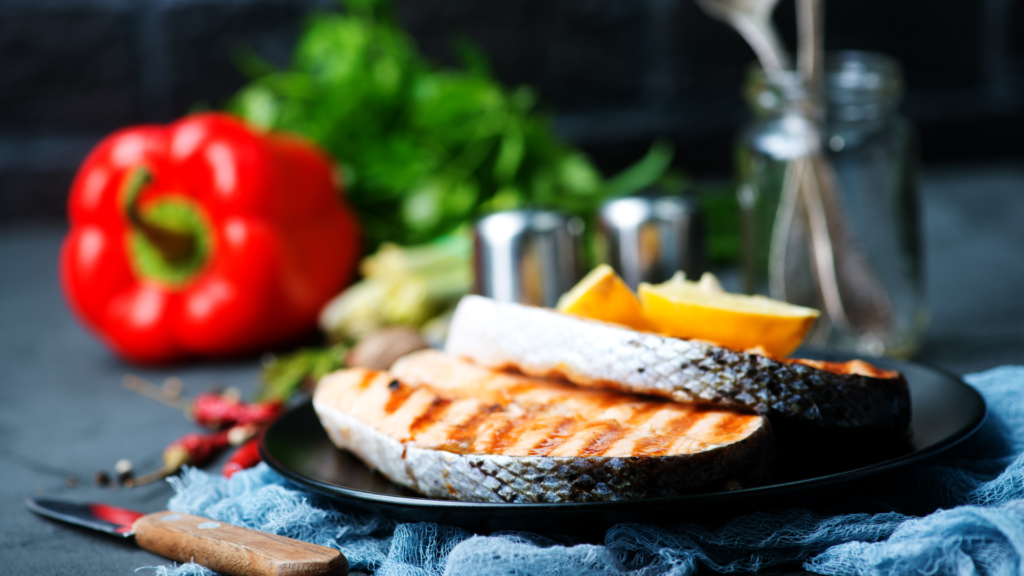SHARES

A lot of us use the F word… erm… are we talking about the same thing?? I am not sure what you are thinking but the F word that we are going to about here is dietary Fibre. We all have read right from school days that fibre is very important for our health, to aid the bowel movement and we need to include as much as we can in our diet. But what is the correct amount of dietary fibre that we need to consume daily?
Too little dietary fibre leads to poor bowel movement – this we know, right? But we have also studied that too much fibre tends to interfere with nutrient absorption. Fibre intake is as important as protein and fat intake.
A recent study in well known medical journal The Lancet on the whole indicates that people who consume the most fibre in their diet are 15–30% less likely to die prematurely owing to a cardiovascular condition or any other cause, compared with those who eat the lesser fibre. Consumption of fibre-rich foods correlated with a 16–24% lower incidence of coronary heart disease, Type 2 diabetes, stroke and colon cancer.
So what’s the magic number? How much dietary fibre should you consume daily?
The study suggests that consuming more than 29 g per day may actually yield more health benefits. Yes, that’s the magic number/amount you should consume daily.
Fruits from the SouthEast Asian region that are high in dietary fibre content:
- Durian (small size) – 22.9g
- Dragon Fruit (per 100g serving) – 3g
- Mangosteen – 100g of fruit provides 13% of recommended dietary allowance (RDA)
- Pomelo
Some high-fibre foods include (values per 100g) – Lentils (7.9%), Artichokes (8.6%), Split Peas (8.3%), Chickpeas (7.6%), Oats (10.6%), Almonds (12.5%), Chia seeds (34.4%) These are some examples of fibre rich foods that you can include in the diet to achieve the 29g per day target.
What is soluble and insoluble fibre?
Normal dietary fibre consists of two components – Soluble and Insoluble fibre. Soluble fibre, as the name suggests is actually “soluble” in water. It has quite a few benefits, such as keeping blood glucose levels in check as well as lowering cholesterol. Soluble fibre is also referred to as gums, pectins, mucilages, and some hemicelluloses. Some good sources of soluble fibre include oats and oatmeal, beans, peas, lentils, fruits and vegetables (especially oranges, apples and carrots).
Insoluble fibre on the other hand does not absorb or dissolve in water. It passes through the digestive system in close to its original form. Insoluble fibre offers several benefits to out gut health, some such benefits include reducing the risk as well as the occurrence of hemorrhoids and constipation.
Insoluble fibres are referred to as lignins, cellulose, and also some other hemicelluloses. Most of the insoluble fibre comes from the bran layer of cereal grain, nuts, beans, vegetables.
Why is fibre good for you?
The health benefits of fibre is actually supported by several decades of research that have been done to study its physical properties, chemistry, physiology, and the effects on metabolism as well.
If you’ve noticed, some (if not most) fibre-rich foods require chewing, (think of the cow Moo!), they also retain much of their structure in the gut, increase satiety and also help weight control.

Moo!
Fibre-rich foods can actually influence lipid and glucose levels, say researchers. The breakdown of fibre in the large intestine by the bacteria present there has additional wide-ranging effects including protection from colorectal cancer.
Are there side-effects or cons of eating too much fibre?
- The research does add a word of caution. While they did not find any adverse health effects occurring due to consumption of fibre, too much of it may be damaging for people who are deficient in minerals or iron.
- Eating large amounts of whole grains may possibly deplete the body further of iron.
- Clinical trials done as part of the study also revealed that consuming more fibre correlates strongly with lower body weight as well as lower cholesterol levels.
What are some of the fibre-rich foods?

Fibre-rich food!
These include whole grains, fruits, vegetables and pulses such as lentils, beans, peas, and chickpeas. (note a pulse is an edible seed that grows in a pod, inexpensive low fat source of protein)
So how can you include more fibre in the diet? Here are some tips:
- Spread out the fibre intake throughout the day. This will help to avoid the gastrointestinal discomforts that a large amount of fibre may cause. You can include fibre-rich foods in every snack as well as in the meal. Without getting the feeling of overdoing it.
- If you haven’t been eating fibre regularly and want to start afresh, increase intake slowly. You needn’t eat huge amounts in one go, right at the start of the process itself. It is a good idea to give the gut time to get used to the new amounts of fibre you are eating. This will help reduce some of the digestive side effects you may experience when you start including fibre in the diet. If you feel discomfort continuously, you can check with the doctor, in the meantime do not increase the fibre intake in the diet.
- Liquids and fibre work together. The higher the fibre content in the food, the more fluids/water you must include in the diet. This will aid proper digestion. Soups, juices and other liquids do count as fluids that can be included.
If in general, you do consume a lot of whole foods such as vegetables, fruits, beans, whole grains, the daily recommended intake can be met easily. Taking higher quantities of fibre than recommended amounts will not magically improve health, it could actually make you feel worse. So go by what doctor/nutritionist says, in case you have doubts.
References:
Got more doubts in this regard? Talk to a doctor. You can search, find, call, send enquiry or request for appointment with a GP on GetDoc:
Find a GP/Family Doctor in Malaysia, on GetDoc
Find a GP/Family Doctor in Singapore, on GetDoc

by Hridya
A biochemist by education who could never put what she studied to good use, finally found GetDoc as a medium to do what she loved - bring information to people using a forum that is dedicated to all things medical. View all articles by Hridya.




